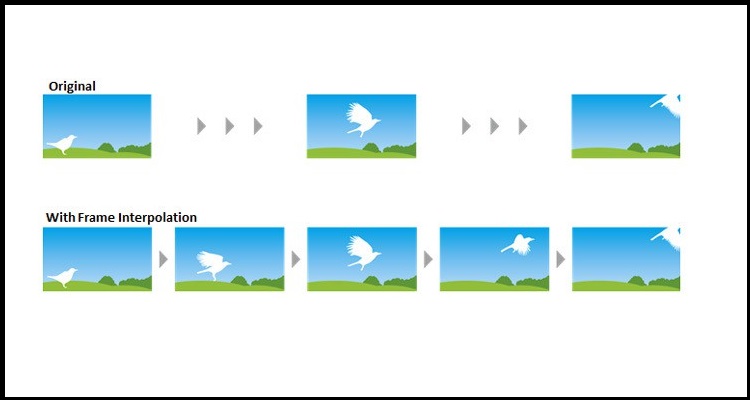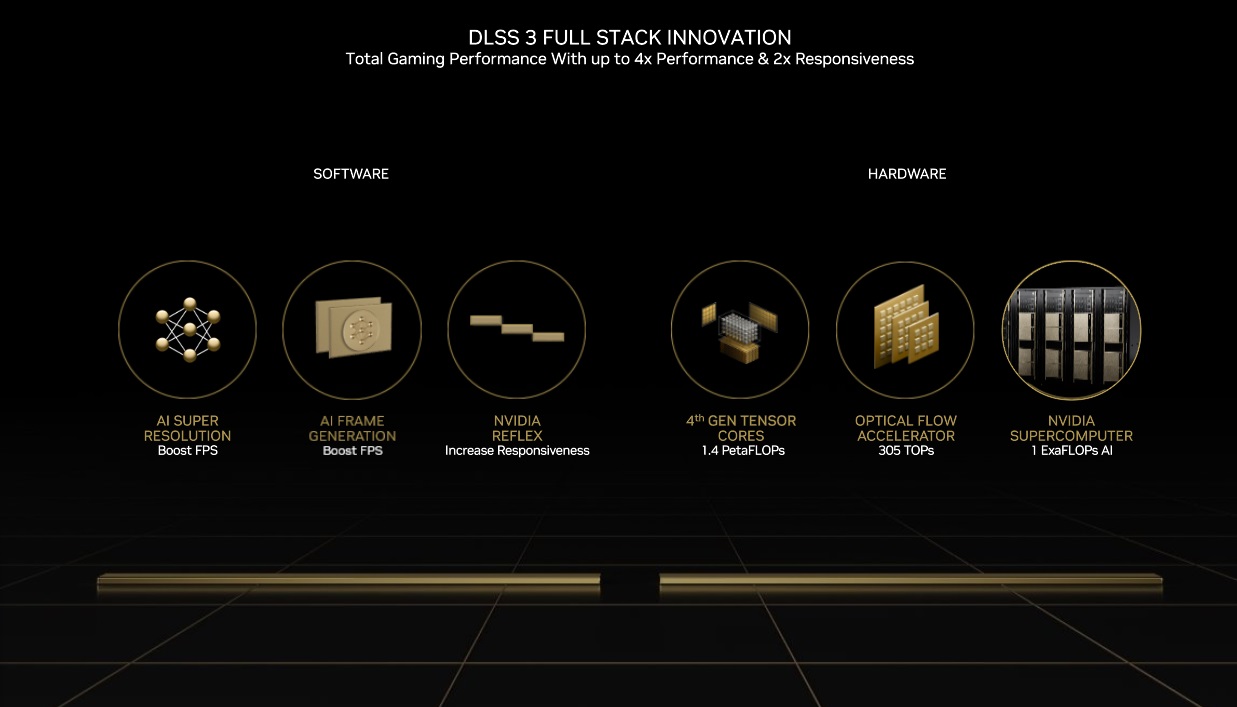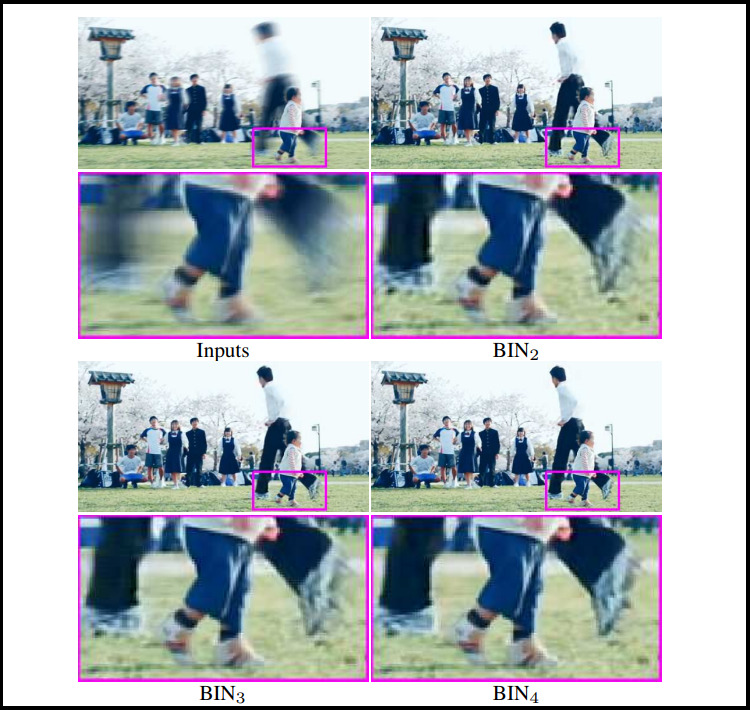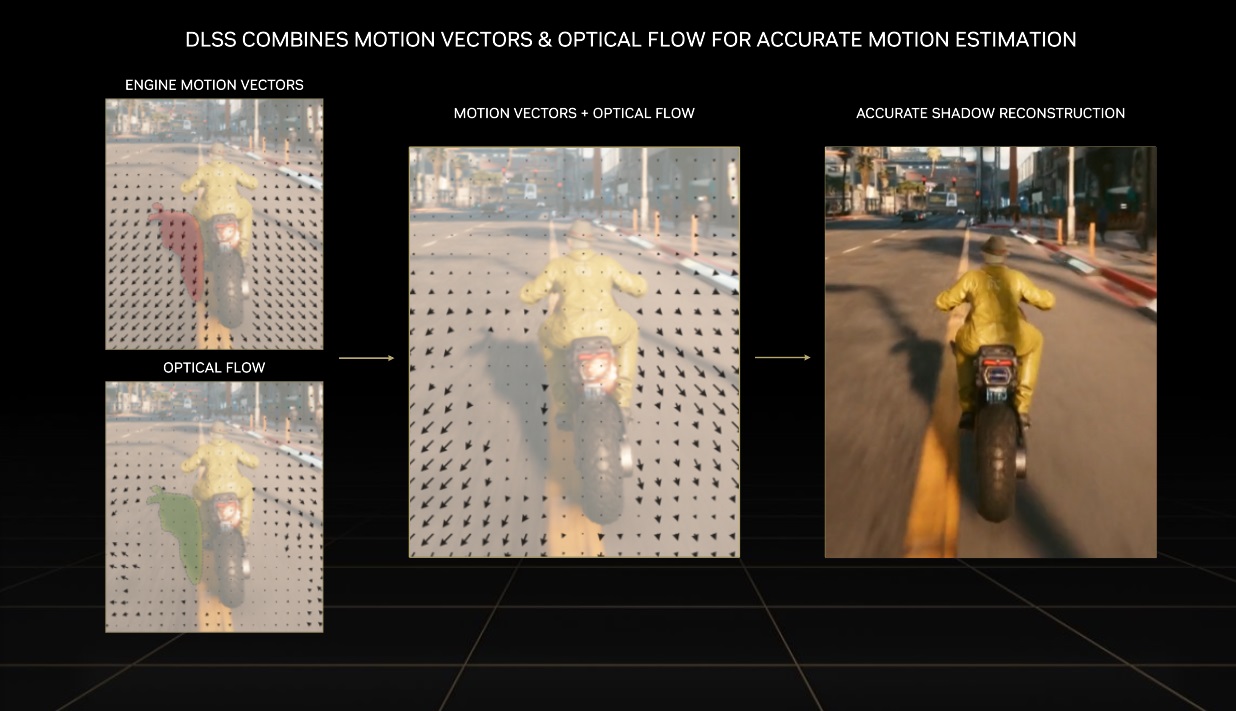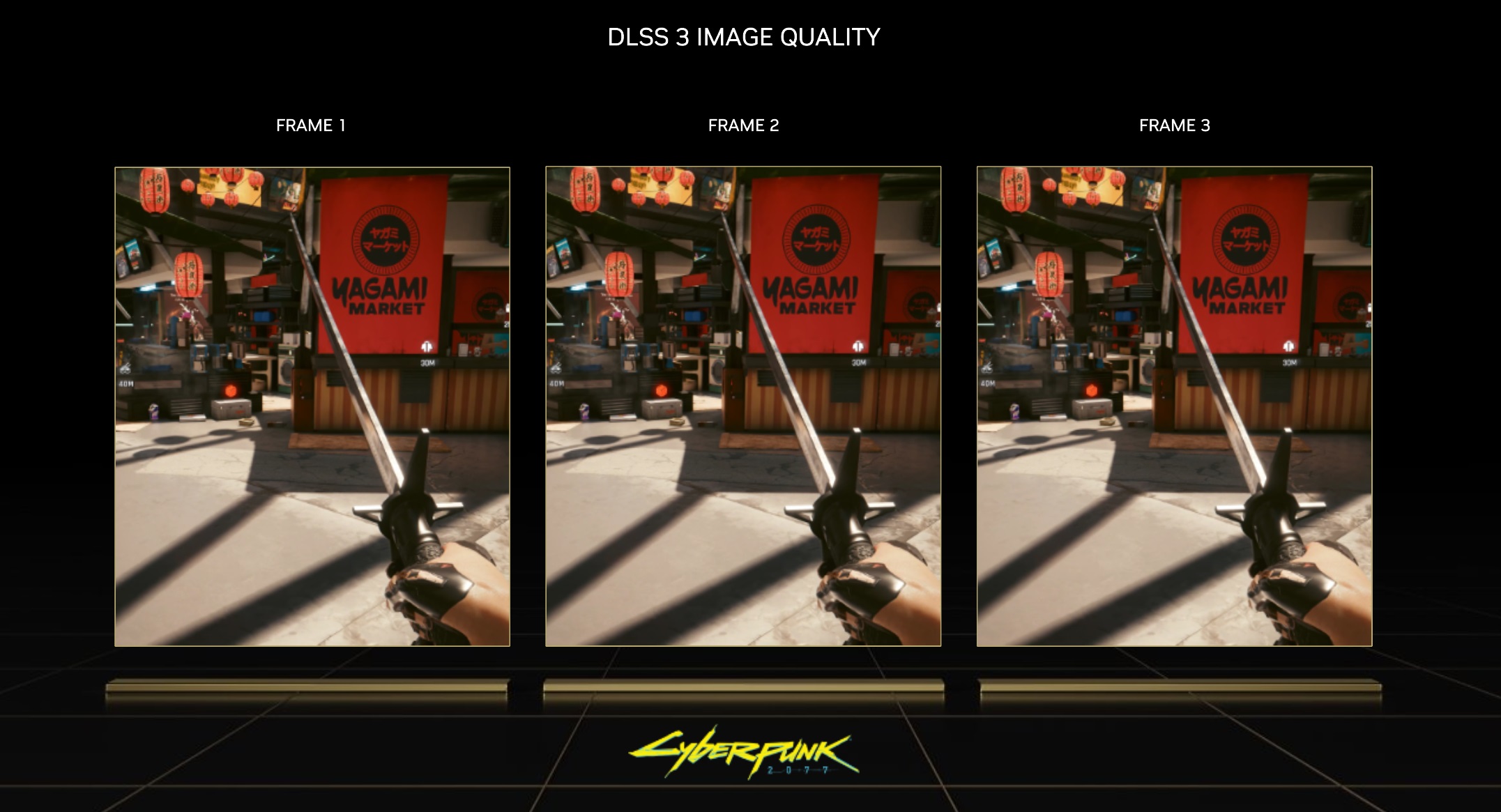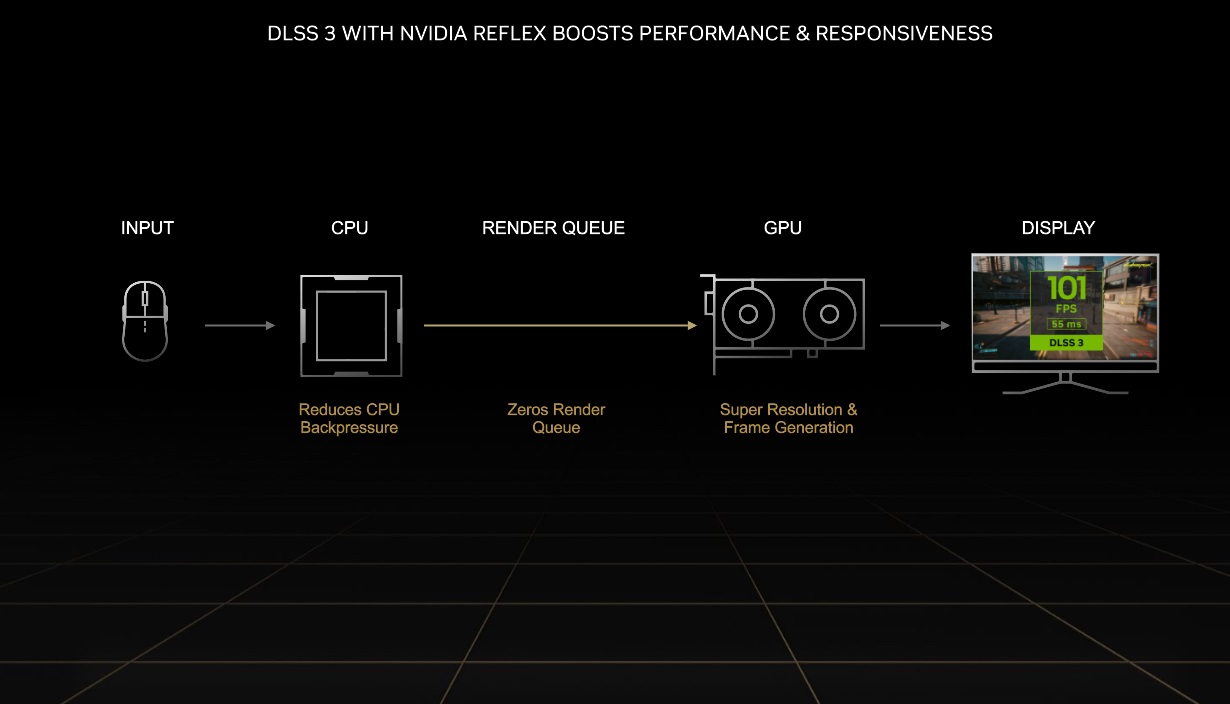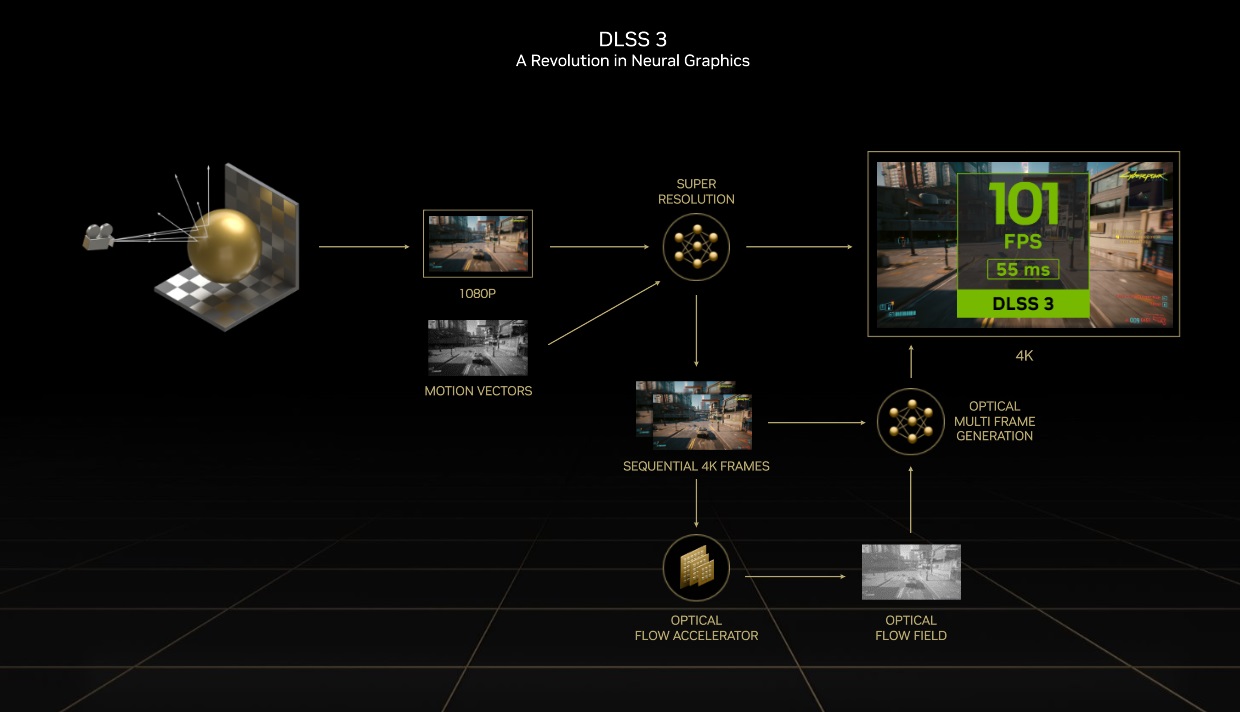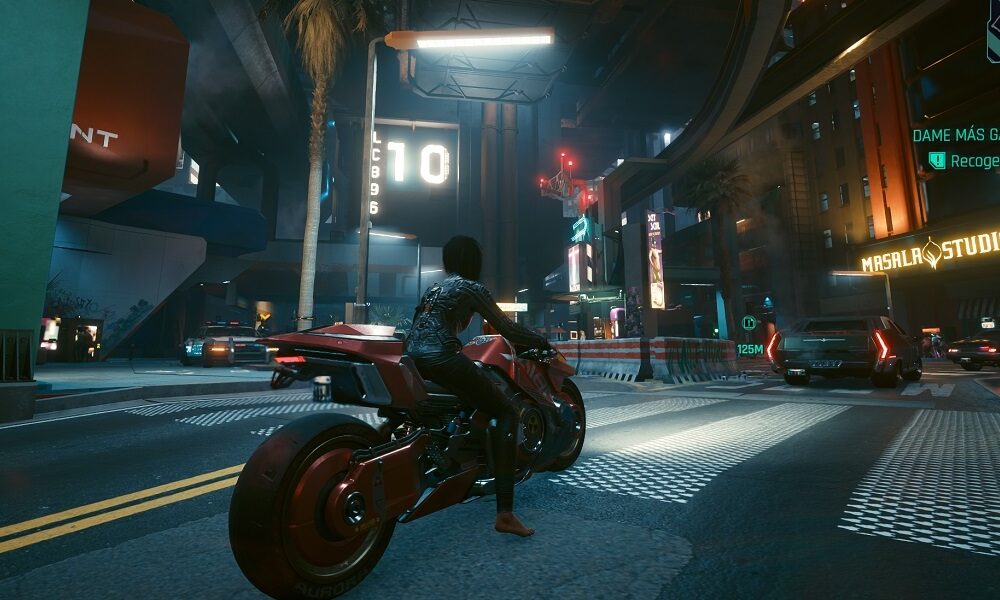
Frame generation is a technology that was introduced by NVIDIA together with the Ada Lovelace architecture which, as our regular readers already know, is the basis of the new GeForce RTX 40 graphics cards, and it is integrated into the DLSS 3. So that this technology can be harnessed in games has to be implemented by developers, and compatible hardware is required.
Since its official announcement, this technology has raised some doubts, especially because some considered it as something that does not contribute anything special, and that essentially amounts to a reuse of something that has already existed for years, the interpolation of frames. It is true that both technologies have the same objective, but putting them in the same bag is a mistakebecause they don’t work in the same way, they don’t have the same requirements and they don’t get the same results.
I know that many of our readers still have doubts about this topic, so I have decided that it is a good moment to shape this special article, where I am going to tell you what exactly these technologies are, how they differ and why we shouldn’t give them the same value. As always, if you have any questions you can leave them in the comments and I will be happy to help you solve them. Having said this, I invite you to make yourself comfortable, we are starting.
Frame interpolation and frame generation: what are they?
Frame interpolation can be defined as a post-processing technique that, broadly speaking, is capable of create an intermediate frame using the information it obtains from the previous frame and the subsequent frame. In this way, the fluidity of the image improves, since the frame rate per second increases.
That intermediate frame exists, it’s totally real if it were not real, we would not notice this improvement in terms of fluency, but it is done based on an estimate of the data of two frames, and this means that the final quality of it is not at the same level, andintroduces major problems which in the end negatively affect the user experience.
This technology It has been available on different televisions for a while, and also in the PC world, but it has generated a certain rejection, especially in the world of cinema at a global level. As for the PC sector, its popularity has been less, but it has also been available for a while, and as Microsoft itself indicates, it is a function that operates during video decoding, and works with the Windows Media Video codec. 9.
Frame generation is based on the same idea, that is, it is a technology that generates a new frame based on the information it extracts from the previous and subsequent frames, but unlike frame interpolation uses artificial intelligence and specialized hardware to achieve superior results and image quality. This makes an important difference, and allows you to overcome the classic problems of frame interpolation.
Frame interpolation problems: how does frame generation overcome them?
The frame generation used by NVIDIA in DLSS 3 uses artificial intelligence algorithms, and these in turn are supported by specialized hardware to improve the quality of each generated frame. Only with these keys we can already understand that its complexity is much greater, and that it clearly moves away from frame interpolation.
With this technology, motion vectors are used to determine the route that each of the pixels would take of the image based on the information available in the intermediate frames, and the «Optical Flow Accelerator» is also used to make a more accurate prediction how the pixels should be displayed in the rendered frame.
Thanks to the «Optical Flow Accelerator» it is possible to achieve a more accurate and realistic reproduction of things as complicated as shading and lighting, and the risk of generating a frame with a poor sharpness is reduced, as well as the appearance of artifacts and graphic glitches. As we can see, we have a specialized process through artificial intelligence, both by software and hardware, which is, in the end, what makes that important difference compared to frame interpolation.
With the generation of frames we will enjoy a much superior experience in all senses, and also the classic problems of frame interpolation are almost completely overcome which, broadly speaking, we can group into the following points:
- Loss of sharpness.
- Graphic glitches and artifacts.
- Appearance of fuzzy clouds and deformations.
- Loss of detail and flickering, especially in scenes with fast movements.
Frame interpolation also produces a increased response time due to latency, a problem that is present in the generation of frames, but that NVIDIA has managed to overcome thanks to technology reflection. This establishes a deep synchronization between the CPU and the GPU to reduce latency as much as possible, and achieves such a good result that we can play without any problem with the generation of frames activated.
What are the benefits of framing and why is it so important?
The most important advantage offered by frame generation is also the most important, it allows to generate an additional frame for every two frames rendered in the traditional way. Said frame exists, it is totally real and it has been generated by artificial intelligence to improve its final quality. This means that thanks to this technology we will enjoy greater fluidity in games.
Let’s see it with a very simple example. In Cyberpunk 2077, using 4K resolution, path tracing and ultra quality, we have an average of 21FPS with a GeForce RTX 4090. If we activate DLSS Super Resolution, also known as DLSS 2, which intelligently rescales and rebuilds the image, performance goes up to 63FPSa figure that would already be perfectly playable, but if we also activate the generation of frames the average goes up to 101 FPS.
The difference in smoothness that frame generation makes is significant, and the result that NVIDIA has achieved in terms of image quality is well above what frame interpolation can deliver. However, this is not the only advantage that this technology offers, and it is that with it we can also reduce bottlenecks that occur at the CPU level.
It is an easy topic to understand. DLSS Super Resolution technology makes sense, especially in games with a very intense graphic load, either because of the complexity of its geometry and the quality of its effects or because of the resolution at which it is rendered, or because of a conjunction of both. In those cases, intelligently lowering the render resolution and rescaling will improve performance considerably, but always up to a certain limit.
When rendering resolution drops below a certain threshold, a CPU-derived bottleneck begins to occur, and from there the performance improvement is less and less, which makes it not worth continuing to lower the pixel count. With this in mind, it is clear that it was not feasible to continue betting on rescaling, and that it was necessary to find a way to improve performance by addressing the bottleneck problem.
Frame generation is the answer to that problem because it generates an intermediate frame completely independent of the CPU. This allows improve fluidity by increasing the frame rate per second regardless of the resolution, and regardless of the existence of a bottleneck at the CPU level.
In processor-heavy games like Microsoft Flight Simulatorwe can go from 85 FPS to 130 FPS in 4K with maximum quality using the DLSS Super Resolution with a GeForce RTX 4090, and if we activate the generation of frames the performance it shoots up to 170 FPS. As I said before, latency is not an issue thanks to NVIDIA Reflex technology.
Final Notes: Important things to be clear about frame generation
With everything we have told you so far, you should already be clear about all the keys behind interpolation and the generation of frames, as well as their advantages and disadvantages and the differences between them which, as we have seen, are not few.
However, so that you have them all more at hand I am going to leave you a summary below with the most important things we have seen in this article.
- Frame generation produces an extra frame for every two renders in the traditional way, but unlike frame interpolation uses artificial intelligence and specialized hardware to achieve a higher quality result.
- Both technologies improve the feeling of fluidity and frame rate per second, but the frame generation is much more advanced and achieves a superior result. The frames generated in both cases are real, but the quality they present thanks to the generation of frames is much higher.
- In frame generation the problem of increased latency is overcome thanks to NVIDIA Reflex technologywhich reduces the response time and makes the difference when activating the first one very small in this regard.
- With frame generation it is possible reduce graphics card power consumptionespecially when the graphics load is low, and maintain a high frame rate per second.
- Bottlenecks at the CPU level do not affect frame generation, as this renders frames entirely on the GPU, without the need to resort to the CPU. That’s why it complements DLSS Super Resolution so well.
- In order to activate frame generation we need compatible games that have implemented support for said technology, and it is essential to have a GeForce RTX 40 graphics card, since it does not work on a GeForce RTX 30 or lower.
